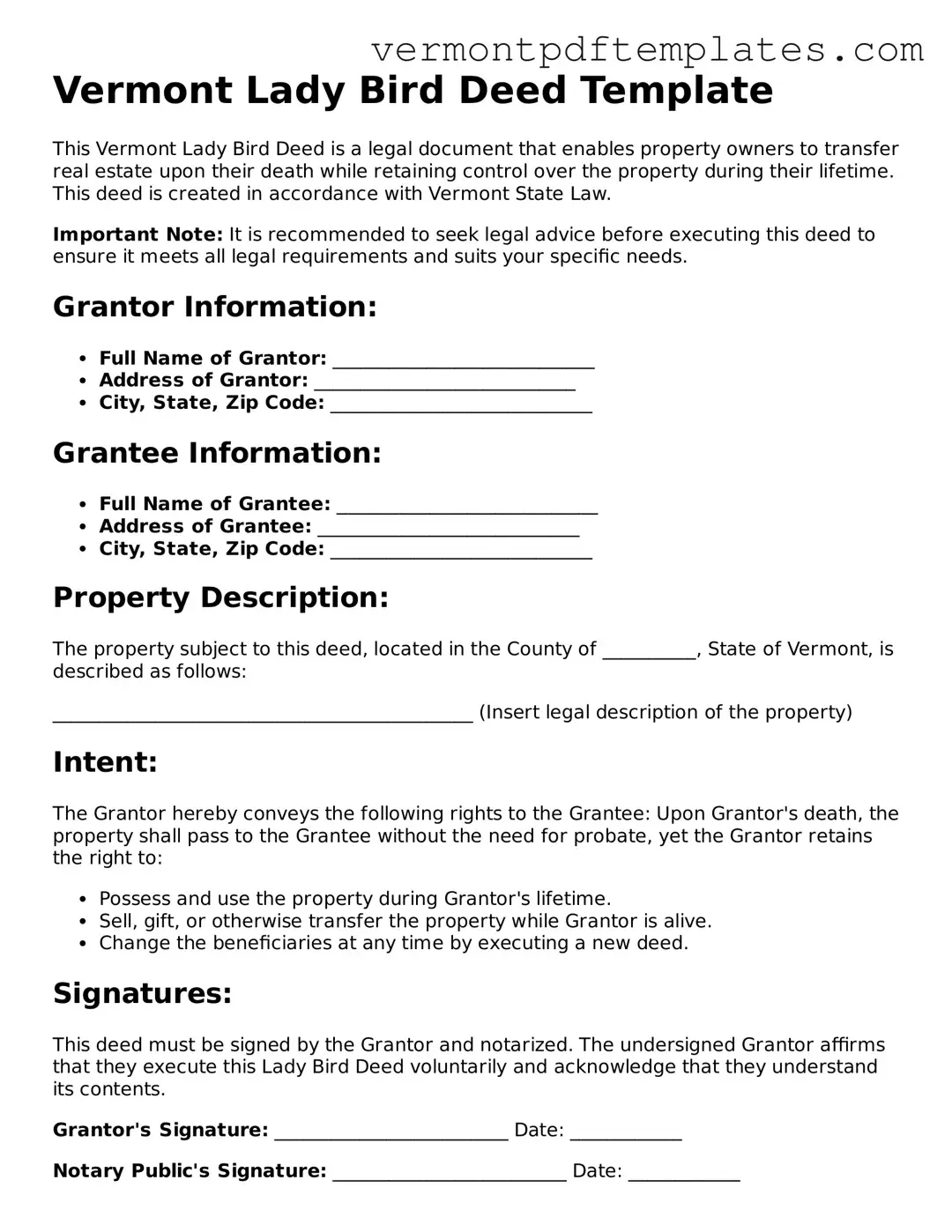The Vermont Lady Bird Deed is similar to a traditional life estate deed. Both documents allow a property owner to retain certain rights during their lifetime while transferring the property to beneficiaries upon death. However, the life estate deed typically restricts the owner's ability to sell or mortgage the property without the consent of the remainderman, whereas the Lady Bird Deed allows the owner to sell or change the beneficiaries without such restrictions. This flexibility can be particularly beneficial for individuals who wish to maintain control over their property while planning for the future.
Another document akin to the Vermont Lady Bird Deed is the revocable living trust. Like the Lady Bird Deed, a revocable living trust allows property to pass directly to beneficiaries upon the owner's death, bypassing probate. The trust can be altered or revoked during the owner's lifetime, similar to how the Lady Bird Deed allows changes to beneficiaries. However, a living trust requires more formal setup and ongoing management compared to the simplicity of executing a Lady Bird Deed.
The transfer-on-death (TOD) deed shares similarities with the Lady Bird Deed in that it allows property to transfer directly to designated beneficiaries upon the owner’s death. Both documents avoid probate, which can simplify the transfer process. However, the TOD deed does not provide the same level of control during the owner’s lifetime since the owner cannot sell or mortgage the property without the beneficiaries’ consent once the deed is recorded.
A general warranty deed is another document that bears resemblance to the Lady Bird Deed. Both types of deeds transfer ownership of property, but the general warranty deed provides a guarantee that the seller holds clear title to the property and has the right to sell it. Unlike the Lady Bird Deed, which retains certain rights for the original owner, a general warranty deed fully transfers ownership and rights immediately upon signing.
The quitclaim deed is similar in that it transfers property interests, but it does so without any warranties. The Lady Bird Deed, on the other hand, retains rights for the owner while ensuring the property will pass to the beneficiaries. A quitclaim deed is often used to clear up title issues or transfer property between family members, but it does not offer the same level of control or protection as the Lady Bird Deed.
To effectively establish your business in Florida, consider utilizing the required Articles of Incorporation document, providing a clear outline of your corporation’s structure and operational details. For a deeper understanding, you can refer to this comprehensive Articles of Incorporation guide.
The enhanced life estate deed is closely related to the Lady Bird Deed, as it allows the property owner to retain the right to live in the home for life while designating beneficiaries. The key difference is that the enhanced life estate deed may not allow the owner to sell or mortgage the property without the beneficiaries’ consent, whereas the Lady Bird Deed explicitly allows for such actions. This makes the Lady Bird Deed a more flexible option for property owners.
Lastly, a special warranty deed is similar to the Lady Bird Deed in that it transfers property ownership but only warrants the title against claims arising during the seller's ownership. Like the Lady Bird Deed, it does not provide the same lifetime rights to the seller. The special warranty deed is often used in commercial transactions, while the Lady Bird Deed is more commonly used in estate planning to maintain control over property until death.
